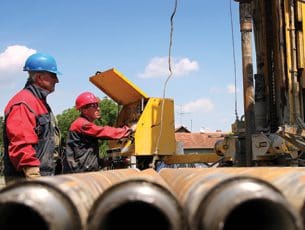It is no secret that infrastructure in the oil and gas industry isn’t getting any younger. Climate change, urbanization, migration, and population growth put further strain on the assets that are required to deliver energy.
With aging infrastructure come certain risks. This can be in terms of poor compliance with environmental laws or even a potential failure to abide by the rules. These very risks constitute the key concern for energy utilities all over the world.
A report compiled by the Strategic Directions in the Electric Utility Industry found that the U.S. oil and gas infrastructure had nearly failing grades. These were because of the aging infrastructure.
Evaluating the Core Areas of Asset Management Programs
It’s not like these utility providers don’t realize the risks of aging infrastructure. The core problem lies in the evaluation of the risks brought forward by aging infrastructures while prioritizing individual strategies for rehabilitation. So how should these utility providers evaluate such risks towards replacement or repair?
One particular tool for identification, evaluation, and prioritization is to employ a formal asset management program. There are some utilities out there that employ only certain pieces of this complete package. Very few have the complete program in place.
A lot of oil and gas operators can be seen doing things like understanding how their risk increases as their infrastructure ages, assessing how this risk changes, and storing all the collected data. The problem, however, is that many of these organizations don’t understand that these assets aren’t just money in their bank. Instead, they are physical facilities that help them in providing a service that will bring forward the end product their customers demand.
This is why utilities have now begun to manage their operations in such a manner that they aren’t just considered as an asset. They are now considered as financial resources that will be able to replace their existing system when it has depreciated.
The Core Areas of Asset Management
The U.S. Environmental Protection Agency came up with its Best Practices for Asset Management which examines 5 core areas for every organization as a starting point. These core areas include:
- The current state of the assets
- The sustainable or required level of service
- Assets that are crucial in bringing forward a sustainable performance
- The costs of the assets’ minimum lifecycle
- The best funding strategies in the long-term
These 5 considerations are further split into the infrastructure’s current makeup and the assessment of risks involved. Where do we stand now and what are the likelihoods and consequences of possible failures? An assessment of these consequences will involve the safety, health, economic, and social effect of asset criticalities.
The very likelihood of asset failures is linked to the condition of the assets.





